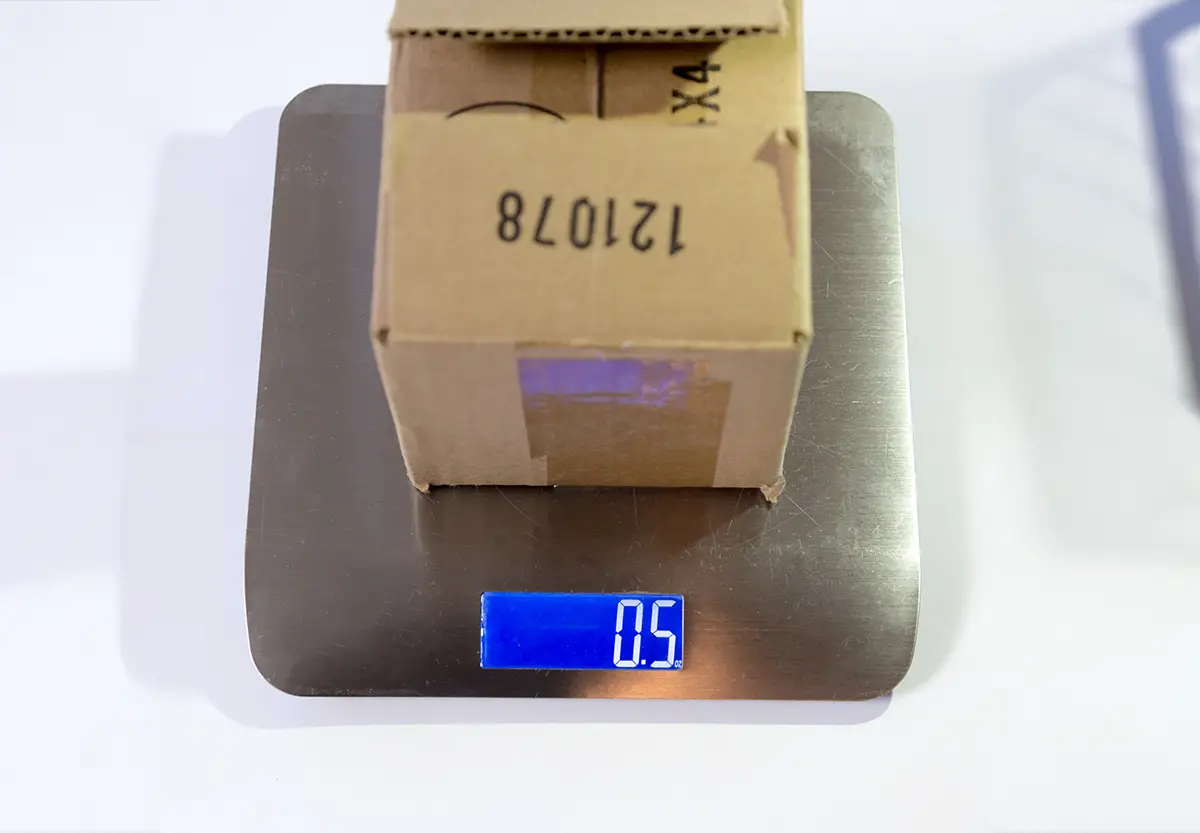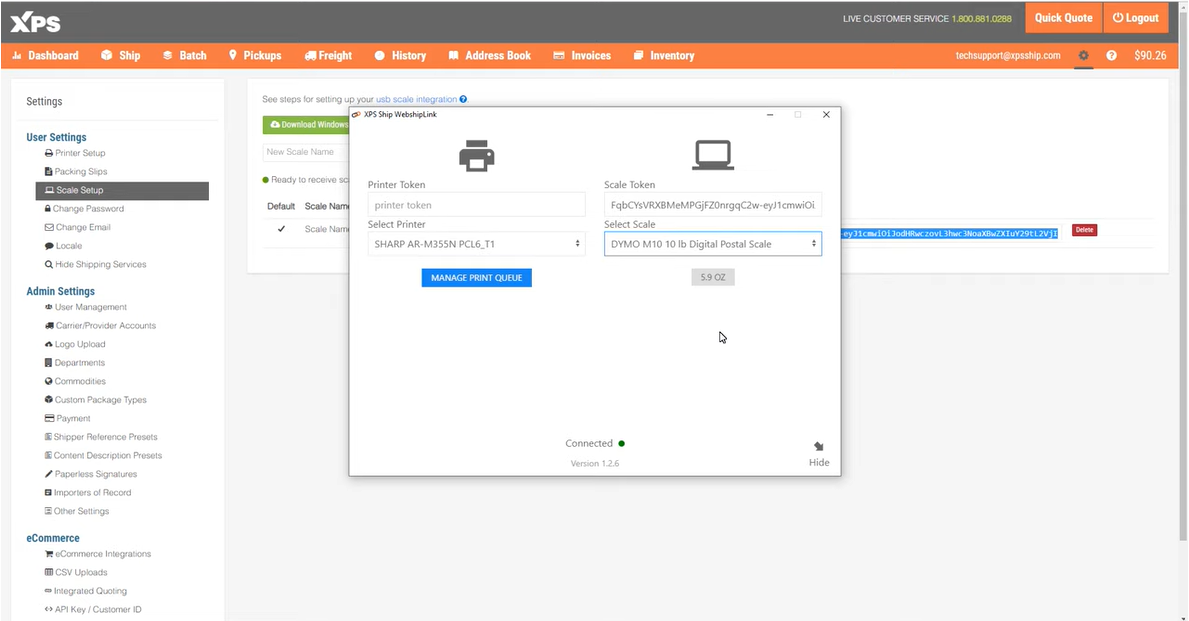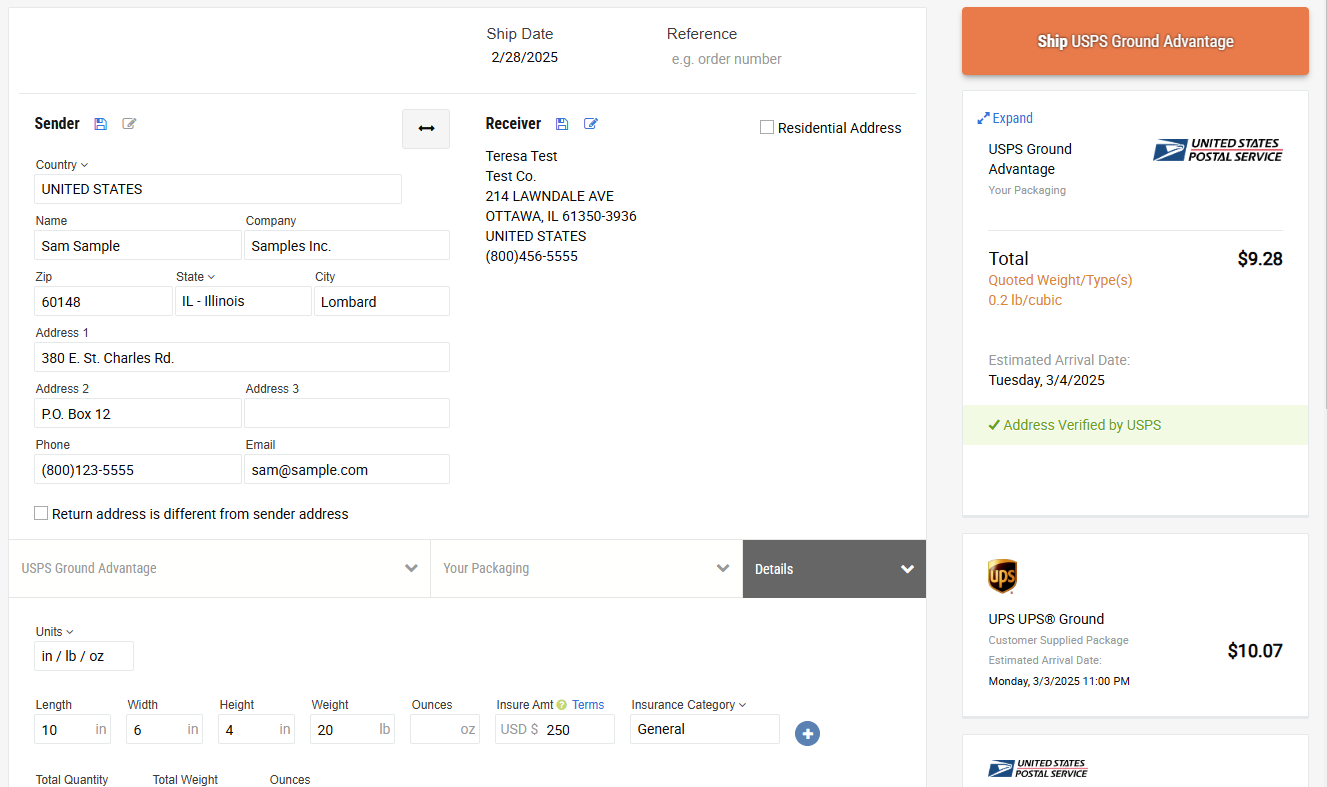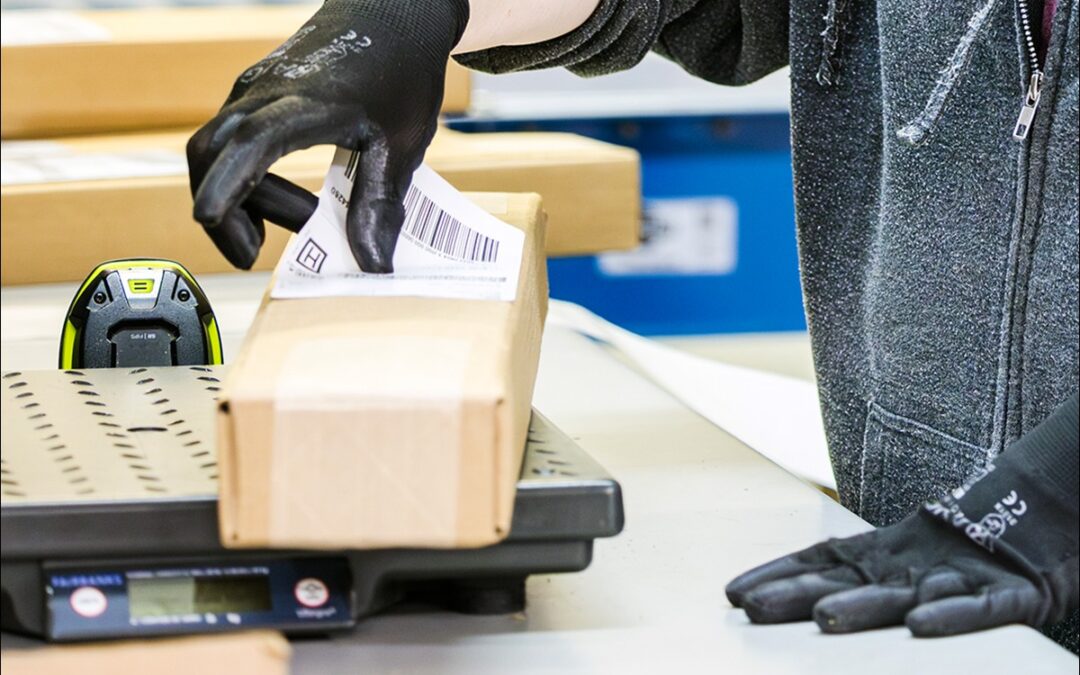Table of Contents
- Why is my shipping cost higher than expected?
a. Incorrect weight was entered
b. Dimensional weight exceeded actual weight
c. Forgot to factor in packaging weight
d. Large package surcharge was applied - What is package weight in shipping?
a. How is shipping cost determined by weight?
b. What is dimensional (DIM) weight?
c. How does DIM weight affect shipping costs?
d. What happens if I overestimate or underestimate weight?
e. How do I accurately measure package weight for shipping? - How can I lower shipping costs related to weight?
- How can shipping software reduce costs related to package weight?
a. Sync with scale for accurate actual weight
b. Pre-set weight and apply to shipments
c. Automatically calculate DIM weight and apply it
d. Apply USPS Cubic Rating to save up to 89% on shipping - Can Descartes help me figure out how to lower shipping costs?
- Key takeaways
In this article, we will take a closer look at the relationship between package weight and shipping costs. By the time we’re done, you should have a clear picture of where your business is losing money due to package weight and what to do about it.
Why is my shipping cost higher than expected?

Incorrect weight was entered
Dimensional weight exceeded actual weight
Forgot to factor in packaging weight
It’s crucial to understand the final package weight to get an accurate cost for shipping labels. That way, you won’t expect one amount for multiple weeks’ worth of shipments and see a totally different number when the invoice shows up.
Large package surcharge was applied
What is package weight in shipping?

How is shipping cost determined by weight?
What is dimensional weight?

Dimensional weight is a calculation used by carriers like UPS, FedEx, and USPS to determine the shipping cost based on the size of the package instead of its actual weight. Carriers use this method for large, lightweight packages because it prevents shippers from overloading planes and trucks.
Common formula to estimate dimensional weight
How does DIM weight affect shipping costs?
Dimensional weight (DIM weight) affects shipping costs in instances where the dimensional weight is greater than the actual weight of a package. When this happens, the carrier will calculate rates based on the dimensional weight instead of the actual weight. Here’s what to do:
- To keep shipping costs lower, always use as small a box as possible.
- Consider vacuum-sealing large, lightweight objects such as stuffed animals, pillows, or blankets to reduce the shipping volume and package size.
- To get accurate shipping cost estimates and avoid surprises, check the actual weight AND the dimensional weight, then take the greater of the two.
What happens if I overestimate or underestimate package weight?
Accurate package weight matters because it affects your shipping costs:
- Overestimating: If you overestimate package weight, you may pay more for shipping labels than necessary, but you won’t face any penalties from carriers.
- Underestimating: If the actual weight is greater than what you reported, the carrier might charge you additional fees for the discrepancy, or they may delay your shipment until you pay the difference.
You will pay more for inaccurate weights whether you overestimate or underestimate, so it’s worth the time and effort to get it right.
How do I accurately measure package weight for shipping?

Actual weight
To determine the actual weight of a package, place it on a digital postal scale and note the weight in pounds or kilograms. Before weighing your package, ensure that the scale is accurate and set to the correct unit of measurement.
For large or irregularly shaped packages, it’s essential to properly balance the item on the scale for an accurate reading.
Dimensional weight
For dimensional weight, either use an online dimensional weight calculator (DIM calculator) or this formula: Length x Width x Height (in inches) ÷ Divisor (typically 139 for domestic shipments, or 166 for international shipments)
Shipping software such as Descartes XPS Ship and Descartes ShipRush automatically calculates DIM weight for you if you enter the package dimensions.
How can I lower shipping costs related to weight?

- Minimize package size: Use the smallest box possible and ensure it’s packed well to avoid unnecessary space.
- Use lightweight packaging: Consider using lighter materials for boxes or padding.
- Choose the right carrier: Compare rates from different carriers (USPS, FedEx, UPS, DHL) since they may charge differently for weight and size.
- Consider shipping in bulk: If you’re shipping multiple items, consider consolidating them into one package to save on shipping costs.
- Use shipping software: Eliminate key entry mistakes, increase accuracy, auto calculate DIM weight, and receive special discounted rates.
How can shipping software reduce costs related to package weight?
Sync with scale for accurate actual weight

Pre-set weight and apply to shipments
Some shipping software can automatically set your full shipment weight based on pre-set conditions. You can weigh your products and packaging ahead of time and save the information in the system, creating greater efficiency.
Then, when each order imports, the shipping solution automatically recalls the weight of that product plus the weight of the designated packaging that will be used and applies it. Descartes XPS Ship offers free live support to set this up.
Automatically calculate DIM weight and apply it
If you enter the package dimensions, a shipping solution like Descartes XPS Ship will apply the correct formula to find the dimensional weight. Then, it will take the greater of the actual weight and the DIM weight and apply it according to the carrier requirements.
The decision whether to use actual or DIM weight is made in the background according to pre-programmed rules, so the shipper does not have to make that distinction. This prevents overpayment or underpayment (and fees) for shipping.
Apply USPS Cubic Rating to save up to 89% on shipping

Some shipping software offers special USPS Cubic rates for small, heavy packages—think “shipping a brick.” These deeply discounted rates apply to packages smaller than 0.50 cubic feet (or 36” for a poly bag) and less than 20 pounds.
When you enter package dimensions and actual weight, shipping software such as Descartes XPS Ship will conduct rate shopping and display USPS Cubic as an available service for shipments that meet the criteria. You can save up to 89% on shipping labels using USPS Cubic services.
Can Descartes help me figure out how to lower shipping costs?
Descartes XPS Ship has a great customer support team that will answer phone calls and live chat for free. It’s one of the crowning gems of our business that you can get somebody on the phone very quickly to walk you through your shipping challenges and brainstorm ways to use our shipping software to help.
Our team is very knowledgeable, very caring, and loves to help our shippers get their system configured so that it’s efficient for them. Ultimately, we win when our customers win and can ship many packages effectively without the headaches.
We’re very passionate about setting things up right on the front side and preventing all those shipping headaches because shipping is tricky. It is a constant fight to get this set up efficiently, so we love to be able to help our customers out. Contact us, and let’s get started!
Key Takeaways
- If your shipping costs are higher than expected, package weight may be the reason.
- Package weight related to shipping costs can mean the actual weight or the dimensional weight of a package.
- You can lower shipping costs related to package weight by using the smallest and most lightweight packaging, accurate actual and dimensional weights, USPS Cubic rates, shipping software presets, and bulk shipping.
- Descartes is here to help you understand package weight and how to use our shipping software to lower shipping costs.
About the Author
Johannes Panzer is the Head of Industry Solutions for Ecommerce at Descartes. With over 17 years in ecommerce fulfillment and shipping SaaS, Johannes brings a wealth of experience in uniting ecommerce business leaders with the right tools and techniques to overcome logistics challenges and drive profitable growth.

